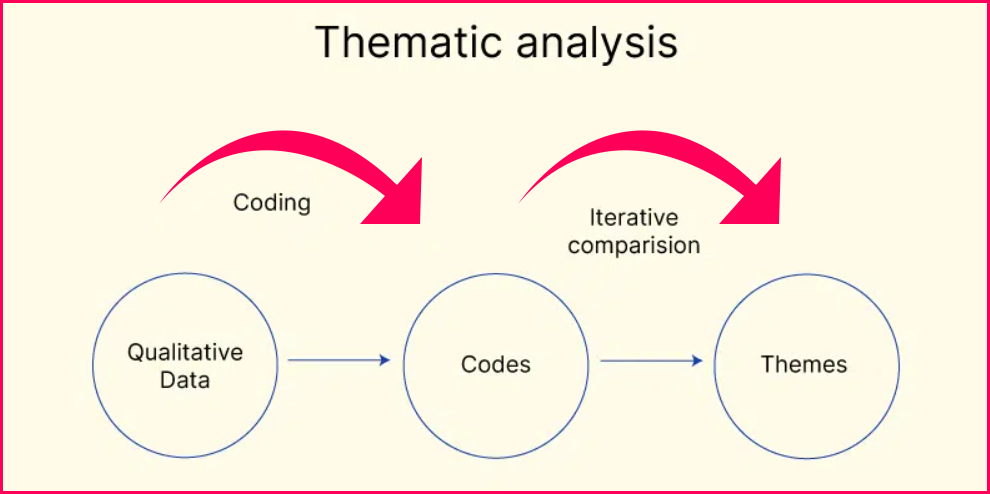Identify themes within your data
Qualitative data, available in the form of text, transcripts, etc. can be analyzed using various methods. Thematic analysis is one such approach which works on qualitative data (in the form of text) by identifying themes and patterns that are recurring. Thematic analysis can be used in different ways and to different data sets & to address different types of research questions. Although useful, performing thematic analysis can be challenging.

How we can help
The team at Statistics Consulting are adept with the thematic analysis process. They can manually & methodically conduct the analysis to yield useful and meaningful results. We identify, organize, analyze, and report themes found within a set of data.
Our Manual Thematic Analysis begins with developing initial codes. This process involves thoroughly reading through the data to familiarize ourselves with the content and context. We systematically organize the data, breaking it down into meaningful segments. Each segment is then assigned a code that represents a specific idea or theme. This coding process is meticulous and detailed, ensuring that every relevant aspect of the data is captured. By creating a comprehensive coding framework, we lay the foundation for identifying patterns and themes that are crucial for the subsequent stages of analysis.
Once the data is coded, our team focuses on identifying themes. We critically examine the codes to detect patterns and group them into broader themes. Each theme is characterized by its significance and relevance to the research questions. This step involves filtering and collating similar codes to form cohesive themes. Our goal is to capture the essence of the data and highlight the underlying patterns that emerge. By organizing the codes into meaningful themes, we provide a structured framework that reflects the core elements of the data.
In the review stage, we refine and further develop the themes identified in the previous step. This involves a thorough examination of each theme to ensure that it accurately represents the data. We modify and adjust the themes as necessary, ensuring that they are coherent and relevant. This iterative process involves constant reflection and adjustment to enhance the clarity and robustness of the themes. By reviewing the themes meticulously, we ensure that they provide a true and comprehensive representation of the data, paving the way for a deeper understanding of the research findings.
The final step in our Manual Thematic Analysis is defining the themes. This involves identifying the essence of each theme and understanding its core message. We also look for sub-themes and explore their interactions with the main themes. This step is crucial for articulating the nuanced meanings within the data. By defining the themes clearly, we ensure that they are well understood and can be effectively communicated. This detailed definition process helps in presenting the themes in a coherent and meaningful way, making the research findings accessible and impactful.